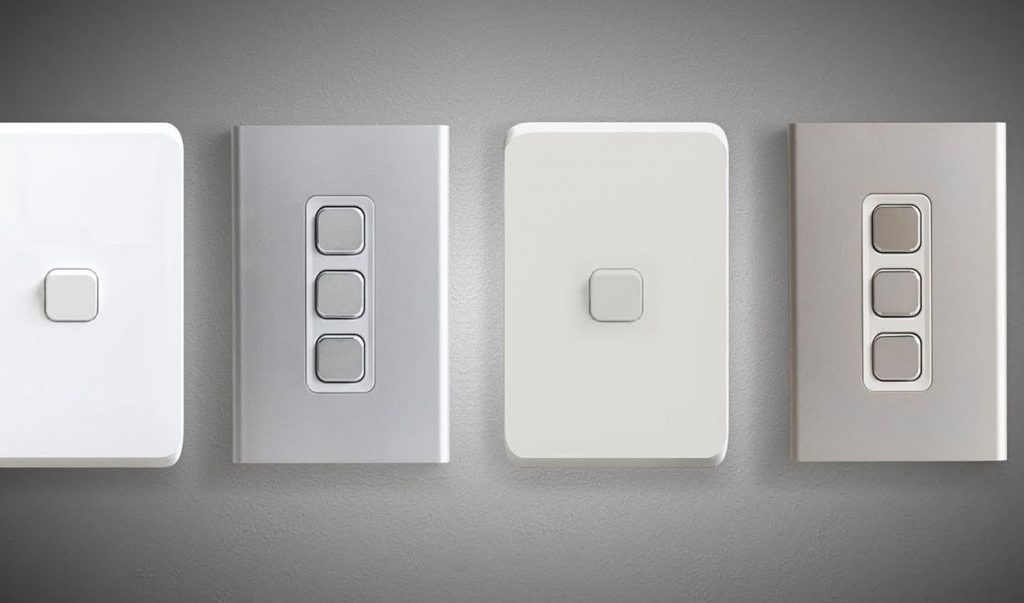If you’ve ever thought about upgrading the switches and sockets in your home, now is the perfect time to dive in. Installing Clipsal switches and sockets isn’t as daunting as it sounds, even if you’re tackling it as a DIY project. With a little planning, the right tools, and a bit of patience, you can handle most installations safely and efficiently.
At AGM Electrical Supplies, we’ve seen countless homeowners and DIY enthusiasts transform their spaces with Clipsal products. From adding modern USB outlets to replacing old switches, Clipsal offers reliable, stylish, and long-lasting options for any home project. This guide will walk you through the essentials, tips, and step-by-step advice for your next installation.
Why Clipsal Is the Go-To Choice for DIY Projects
Before getting your hands on a screwdriver, it’s worth understanding why Clipsal stands out.
Firstly, durability. Clipsal switches and sockets are built to last, even in areas that get heavy use, like kitchens or hallways. Then there’s ease of installation. Many ranges, like Clipsal Classic and Iconic, are designed with DIY-friendly features, so you don’t need to be a licensed electrician to fit them.
On top of that, Clipsal offers style and variety. Whether you prefer a sleek, modern look, a simple classic design, or even premium glass finishes, there’s a switch or socket to match your home’s decor. And of course, all products meet Australian safety standards, so you can feel confident about the reliability of your installation.
Gathering Your Tools and Materials
Successful DIY installations start with preparation. Here’s what you’ll need:
Tools:
- Screwdrivers (flathead and Phillips)
- Wire stripper and cutter
- Pliers
- Voltage tester or multimeter
- Drill and bits (for new wall boxes)
- Electrical tape
- Spirit level
Materials:
- Clipsal switches or sockets of your choice
- Wall boxes for new outlets
- Electrical wiring suitable for your home
- Faceplates and mounting screws
Having everything on hand before you start will save you frustration and make the process smoother.
Safety Comes First
It might sound obvious, but safety cannot be stressed enough. Always switch off the circuit at the main breaker before touching any wiring. Double-check with a voltage tester to confirm the wires are not live. If you have children or others at home, let them know you’re working on the electrical system. A pair of insulated gloves adds an extra layer of safety too.
Even with simple DIY projects, these precautions can prevent accidents and give you peace of mind as you work.
Removing Old Switches and Sockets
If you’re replacing existing fittings, start by removing the old ones carefully. Unscrew the faceplate and gently pull the switch or socket out of the wall. Take note of which wire goes where — labeling them can be very helpful. Disconnect the wires one at a time and keep them separated to avoid accidental contact.
This step might seem tedious, but it makes the new installation much easier.
Preparing the Wires
Good wire preparation is key to a solid installation. Strip about 10–12mm of insulation from each wire and ensure the ends are straight and undamaged. Check that the wall box is clean and free of debris. Well-prepared wires make it easier to connect your new Clipsal switch or socket securely.
Installing Clipsal Switches
Here’s how to fit a switch confidently:
Start by connecting the wires. For a single-pole switch, attach the active (live) wire to the terminal marked “L.” If you’re installing a multi-way switch, follow the wiring diagram that comes with your product.
Next, gently tuck the wires into the wall box and screw the switch into place. Don’t force the wires; they should sit comfortably without bending sharply.
Finally, attach the faceplate. Use a spirit level to ensure it sits straight, and test the switch once the power is back on. If it’s a dimmer, try adjusting the control to make sure it operates smoothly.
Installing Clipsal Sockets
Sockets are very similar:
Connect the live wire to the “L” terminal, the neutral wire to “N,” and the earth wire to the green/yellow terminal. Push the wires neatly into the wall box and screw the socket in place. Attach the faceplate and test the socket with a device or voltage tester to ensure everything works correctly.
Even small attention to detail, like ensuring no wires are pinched, makes a big difference in safety and longevity.
Tips for a Neat, Professional Finish
A few extra tips can make your DIY project look polished:
- Use a spirit level to keep switches and sockets straight.
- Avoid over-tightening screws, which can crack the faceplate.
- Label switches if you’re doing multiple rooms — it saves time later.
- Keep extra screws and clips handy. You’ll be thankful if something is missing.
- When possible, choose products from the same Clipsal range for a consistent look throughout your home.
Small details like these make your installation look like it was done by a professional.

Common Mistakes to Avoid
Even experienced DIYers can slip up. Watch out for these:
- Forgetting to turn off the power before starting work.
- Mixing up live and neutral wires.
- Using incompatible switches or sockets for your existing wiring.
- Neglecting to connect the earth wire.
Avoiding these errors ensures your installation is both safe and long-lasting.
Why AGM Electrical Supplies Makes DIY Easier
AGM Electrical Supplies isn’t just a supplier it’s a resource for DIY enthusiasts. With a wide selection of Clipsal products, clear installation instructions, and helpful staff available for advice, AGM takes the stress out of DIY electrical work.
Whether you need switches, sockets, dimmers, or faceplates, AGM stocks products that meet Australian standards, so your installations are both safe and stylish.
Mastering Your Clipsal Switch and Socket Installation
Installing Clipsal switches and sockets yourself is a project that any confident DIYer can handle with the right preparation and tools. By paying attention to safety, preparing wires carefully, and following installation steps, you can achieve professional-looking results without needing an electrician for every room.
With Clipsal’s quality and reliability, and AGM Electrical Supplies as your go-to source, upgrading your home’s electrical fittings becomes a manageable and satisfying task. Your home will not only look refreshed and modern, but you’ll also gain the confidence to tackle future DIY projects with ease.
FAQs
How do I safely install Clipsal switches at home?
Turn off the main power, check wires with a tester, and follow the instructions provided with your Clipsal switch.
Can I install Clipsal sockets myself?
Yes. With basic tools and proper safety precautions, homeowners can handle most standard socket installations.
What tools are needed for Clipsal installation?
Screwdrivers, wire strippers, pliers, voltage tester, electrical tape, and a spirit level are essential.
Do I need a licensed electrician?
For standard DIY installations, no. Consult an electrician for complex wiring or multi-way switches.
Where can I buy genuine Clipsal products?
AGM Electrical Supplies offers a wide range of authentic Clipsal switches, sockets, and accessories with guidance for DIY projects.
Comments
No posts found
Recent posts
SMS, Wechat and Whatsapp Contact Details:
For quotes, orders or to get the latest product and pricing news
PLEASE NOTE: We Do Not ANSWER Phone Calls (messages only) and We only respond during business hours.-
Mobile for SMS only

-
Text Message on Whatsapp
 scan Me
scan Me -
Text Message on WeChat
 Wechat ID: agmelectrical
Wechat ID: agmelectrical scan Me
scan Me














































